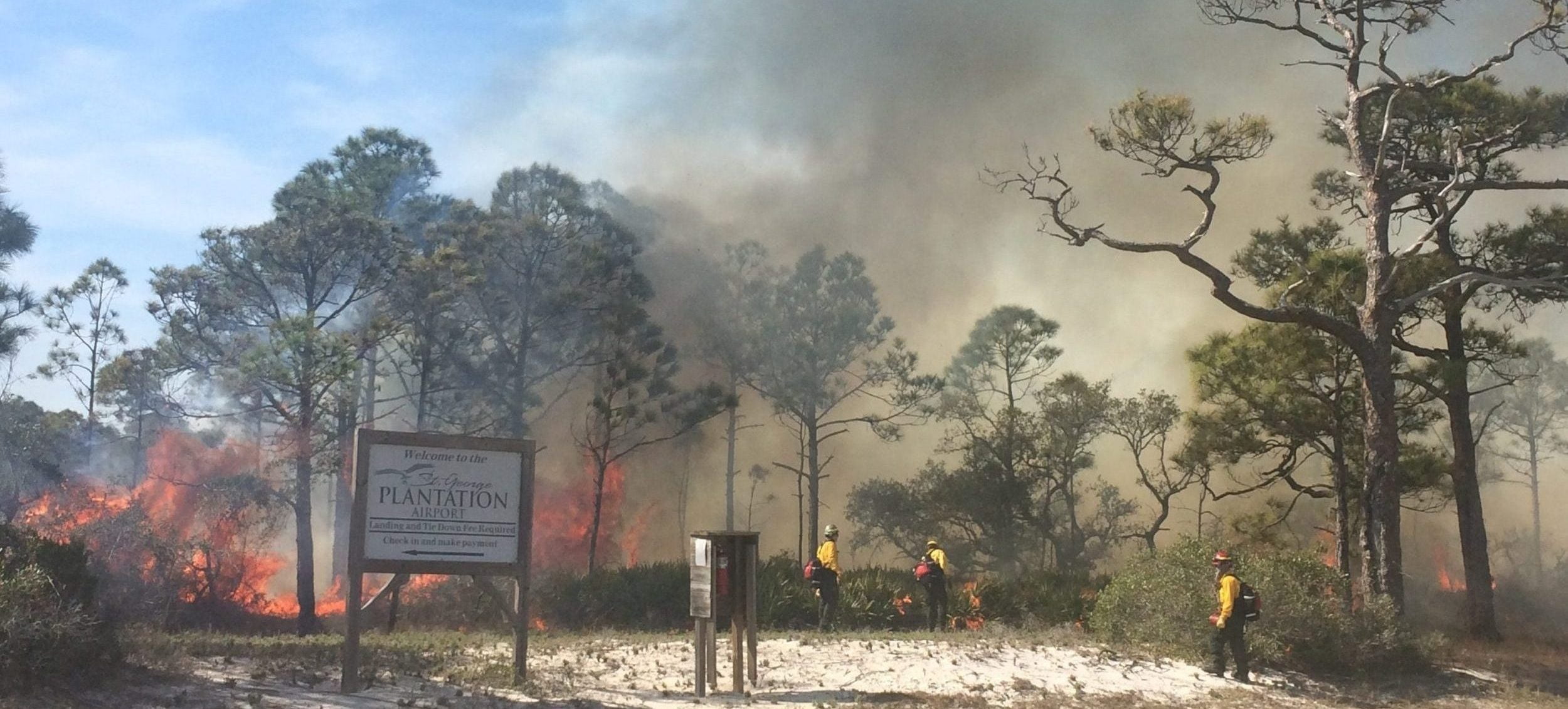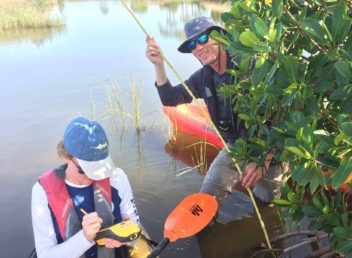
The Reserve's Stewardship staff conducts prescribed fires which are critical for restoring and maintaining native biodiversity.
Stewardship
The mission of the Apalachicola National Estuarine Research Reserve Stewardship program is to protect, conserve and restore the lands and waters of the Reserve. This is accomplished by hands-on management and restoration and through partnerships with other public and private land managers and volunteers.
The Reserve directly manages nearly 7,000 acres of upland habitat in Franklin County. This includes Little St. George Island, the Lower River marshes, Nick’s Hole and Unit 4 on St. George Island, and the Cat Point area in Eastpoint. Staff manage the marsh and upland areas to promote natural, healthy ecosystems, applying tools such as prescribed fire, invasive plant removal, debris clean-ups, and restoration projects to achieve these goals.
The Stewardship sector leads habitat mapping and the Reserve’s geographic information systems (GIS) programs, maintaining spatial databases that help manage these significant areas and aid in detection of habitat changes. Staff conduct habitat surveys, especially vegetation in marsh areas and to map the spread of mangroves into the northern Gulf. Staff monitor and protect threatened and endangered species within the reserve including nesting shorebirds, sea turtle nests on Little St. George island, and more.
The Stewardship program also manages public access on Reserve lands and promotes low impact recreation within the Reserve’s managed lands, including hiking trails, parking areas, picnic areas and "leave-no-trace" paddling campsites. The sector also manages cultural resources present within the Reserve. The goals of this portion of the program are to promote public enjoyment of our lands and waters while encouraging responsible stewardship of this unique area.

Stewardship staff conducts sea turtle nest evaluations on Little St. George Island.

Staff conducts mangrove surveys.
